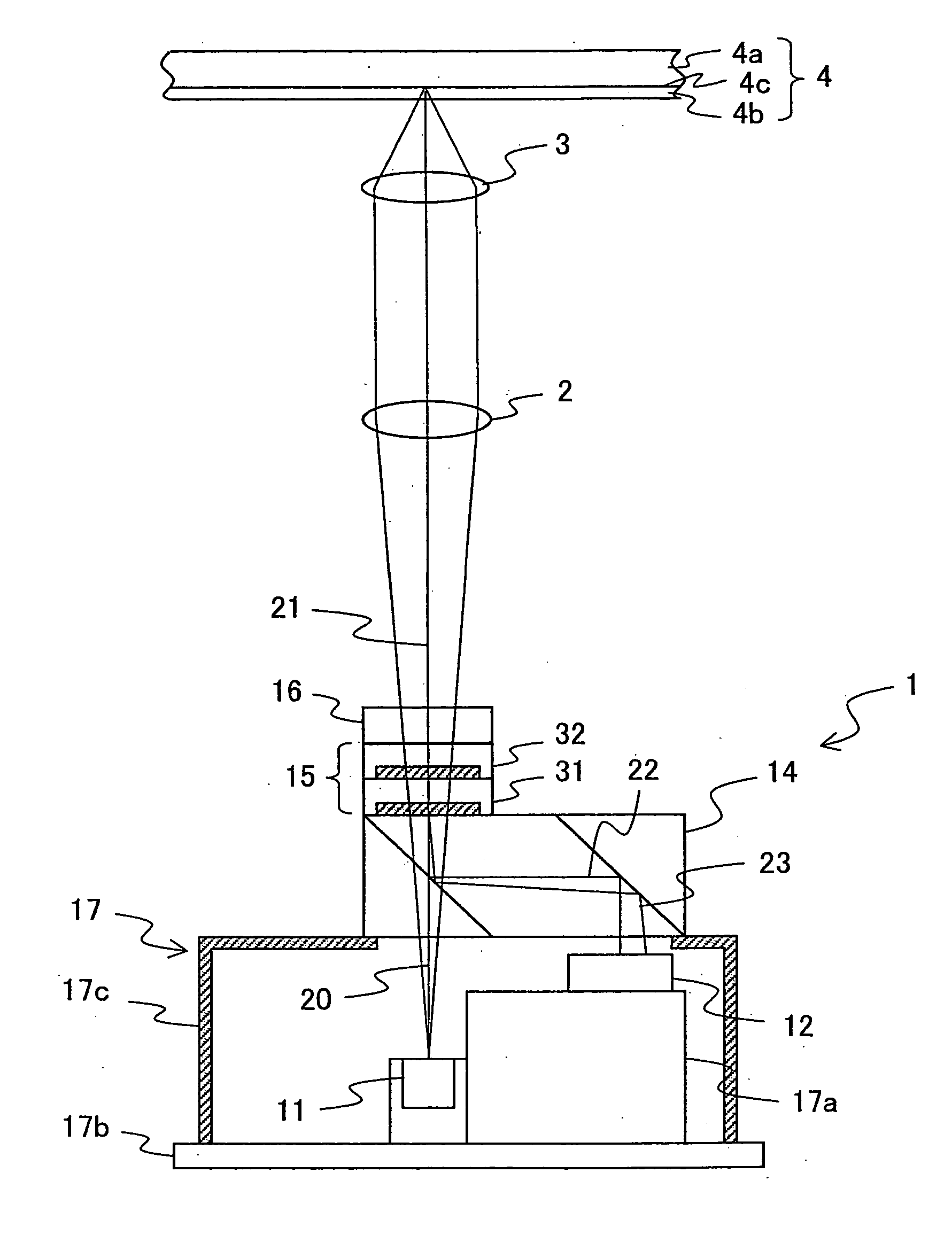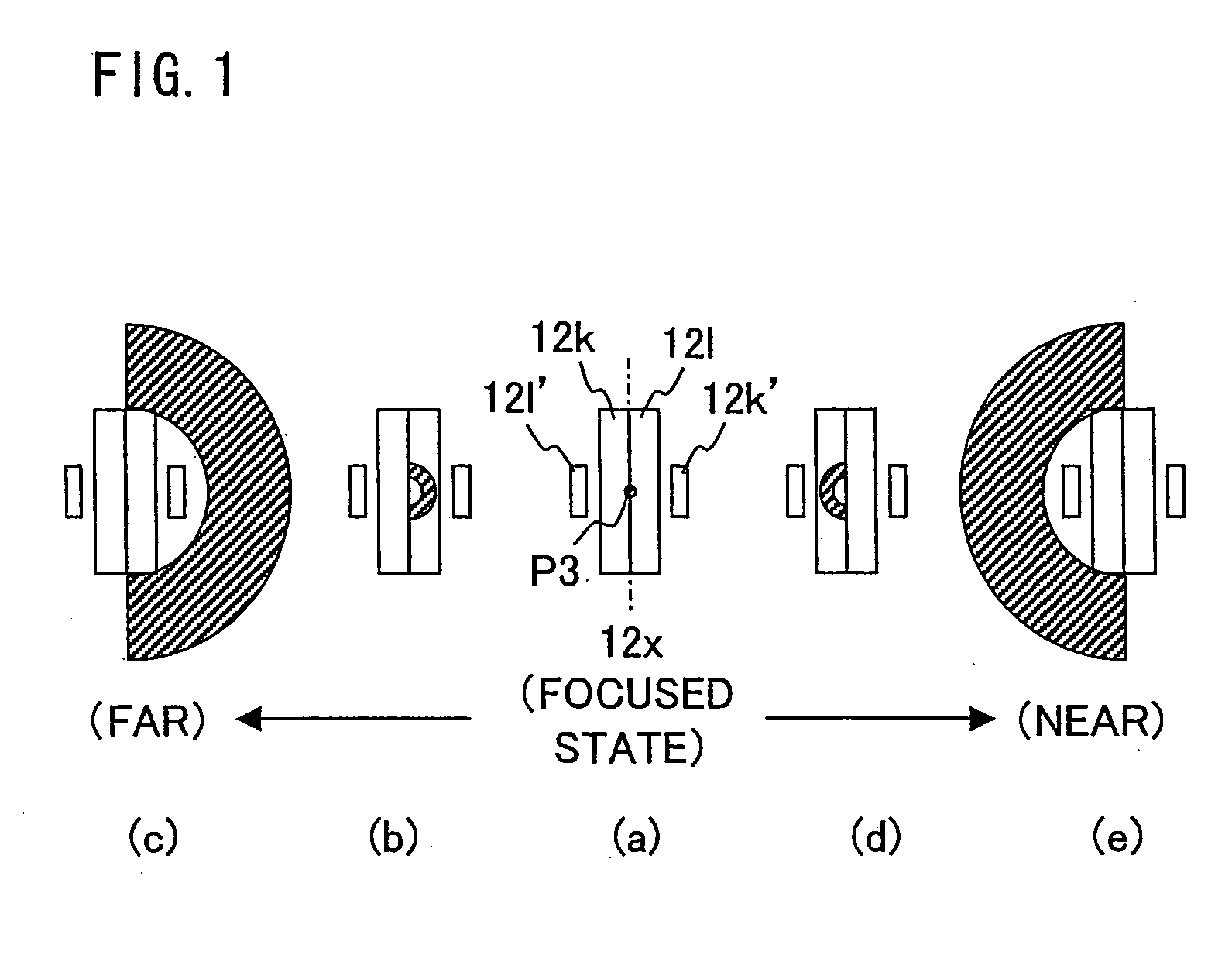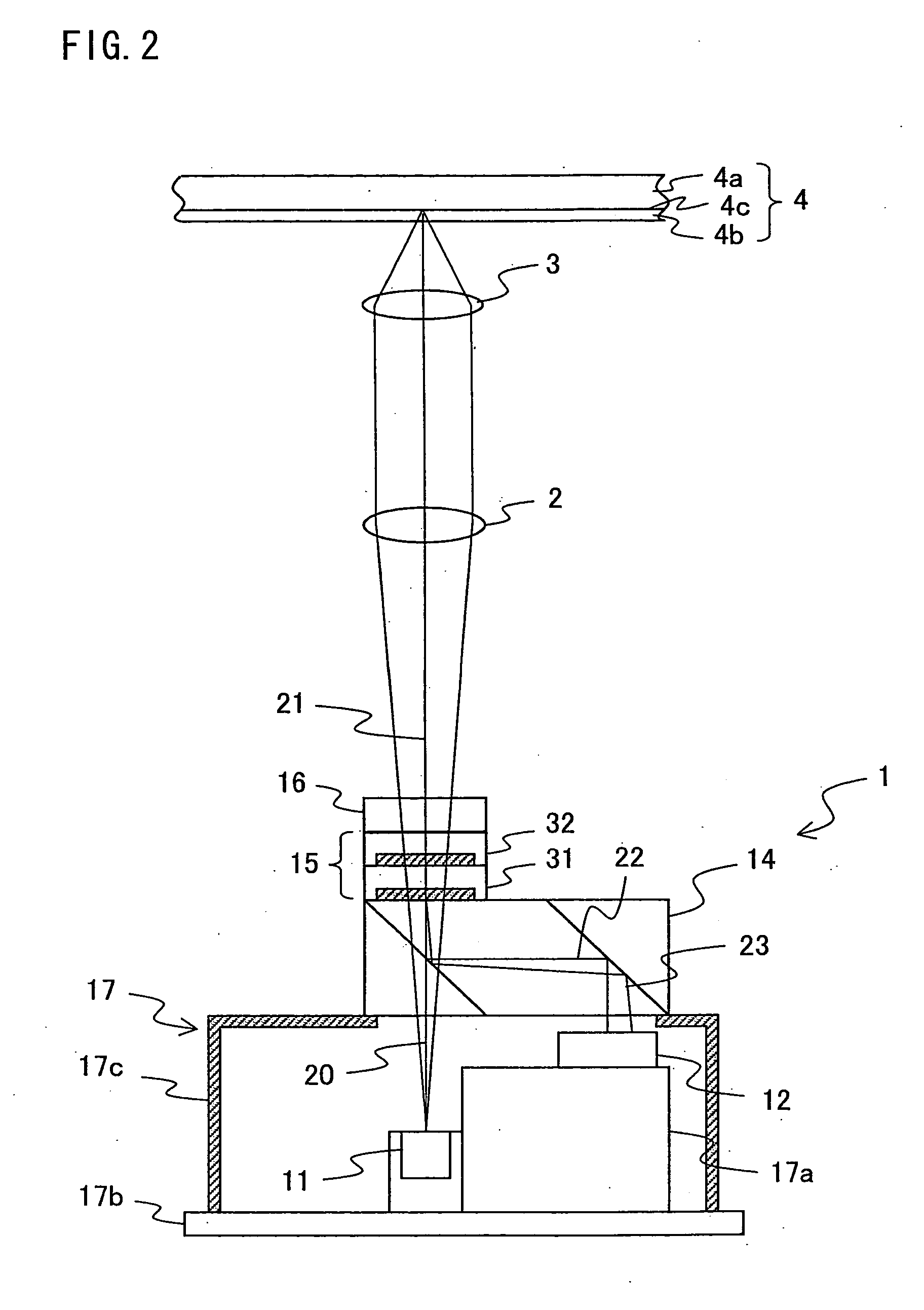Optical pickup device
a pickup device and optical technology, applied in the field of optical pickup devices, can solve the problem that the accurate focus control cannot be carried out, and achieve the effect of reducing the effect of reflected light and correcting the spherical aberration
- Summary
- Abstract
- Description
- Claims
- Application Information
AI Technical Summary
Benefits of technology
Problems solved by technology
Method used
Image
Examples
first embodiment
[0055] One embodiment of the present invention will be described below with reference to the drawings.
[0056] As illustrated in FIG. 2, an optical pickup device according to the present invention includes an optical integrated unit 1, a collimator lens 2, and an objective lens (converging means) 3. Further, light emitted from the optical integrated unit 1 passes through the collimator lens 2 and the objective lens 3, and then is converged and reflected on an optical disk 4. Moreover, the reflected light passes again through the collimator lens 2 and the objective lens 3, and is converged on a photodetector 12 (described later) in the optical integrated unit 1.
[0057] The optical pickup device according to the present embodiment is arranged such that: the optical integrated unit 1 includes, as a light source, a laser source that projects a light beam having a short wavelength of approximately 405 nm, and the objective lens 3 has a high numerical aperture (NA) of approximately 0.85. T...
second embodiment
[0133] Another embodiment of the present invention will be described below with reference to the drawings. Note that members having the same functions as those described in the first embodiment are given the same reference numerals, and the descriptions thereof are omitted.
[0134] The present embodiment defines a relationship between (i) respective shapes of the main light receiving regions 12i and 12j and the auxiliary light receiving regions 12i′ and 12j′ and (ii) respective shapes of the main light receiving regions 12k and 12l and the auxiliary light receiving regions 12k′ and 12l′. The main light receiving regions 12i and 12j and the auxiliary light receiving regions 12i′ and 12j′ are irradiated with the light beam P1 diffracted by the region 32a of the second polarizing hologram element 32. The light beam P1 includes the optical axis of the light beam projected on the second polarizing hologram element 32. The main light receiving regions 12k and 12l and the auxiliary light re...
third embodiment
[0150] A further embodiment of the present invention will be described below with reference to the drawing. Note that members having the same functions as those described in the first embodiment are given the same reference numerals, and the descriptions thereof are omitted.
[0151] As described in the first embodiment, the second polarizing hologram element 32 is divided into the three regions 32a, 32b, and 32c. The region 32a diffracts the light beam P1. The region 32c diffracts the light beam P2. The region 32b diffracts the light beam P3. The light beam P1 is projected on the first main light receiving regions 12i and 12j and the first auxiliary light receiving regions 12i′ and 12j′. The light beam P2 is projected on second main light receiving regions 12m and 12n and second auxiliary light receiving regions 12m′ and12n′. The light beam P3 is projected on the main light receiving regions 12k and 12l and the auxiliary light receiving regions 12k′ and 12l′. Described in the present...
PUM
 Login to View More
Login to View More Abstract
Description
Claims
Application Information
 Login to View More
Login to View More - R&D
- Intellectual Property
- Life Sciences
- Materials
- Tech Scout
- Unparalleled Data Quality
- Higher Quality Content
- 60% Fewer Hallucinations
Browse by: Latest US Patents, China's latest patents, Technical Efficacy Thesaurus, Application Domain, Technology Topic, Popular Technical Reports.
© 2025 PatSnap. All rights reserved.Legal|Privacy policy|Modern Slavery Act Transparency Statement|Sitemap|About US| Contact US: help@patsnap.com



